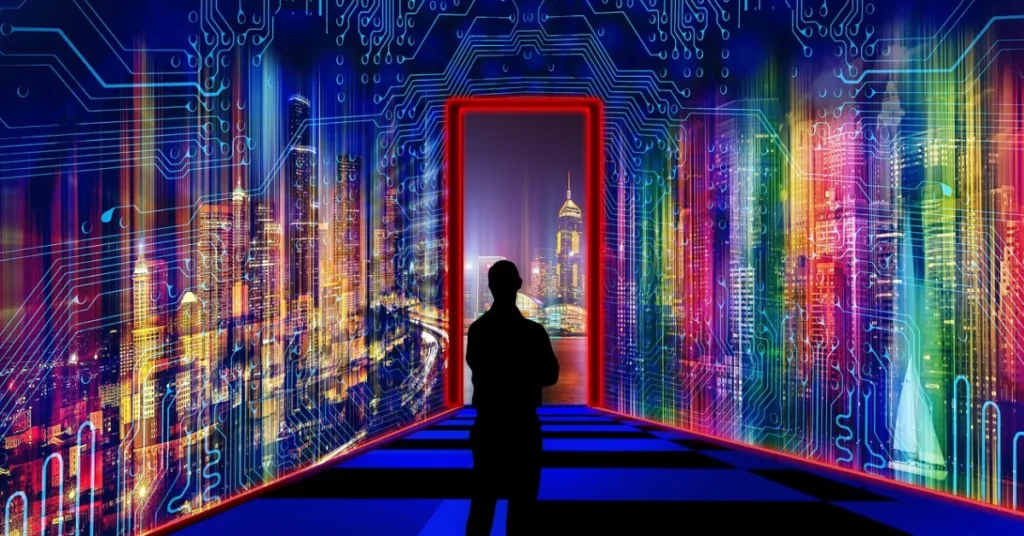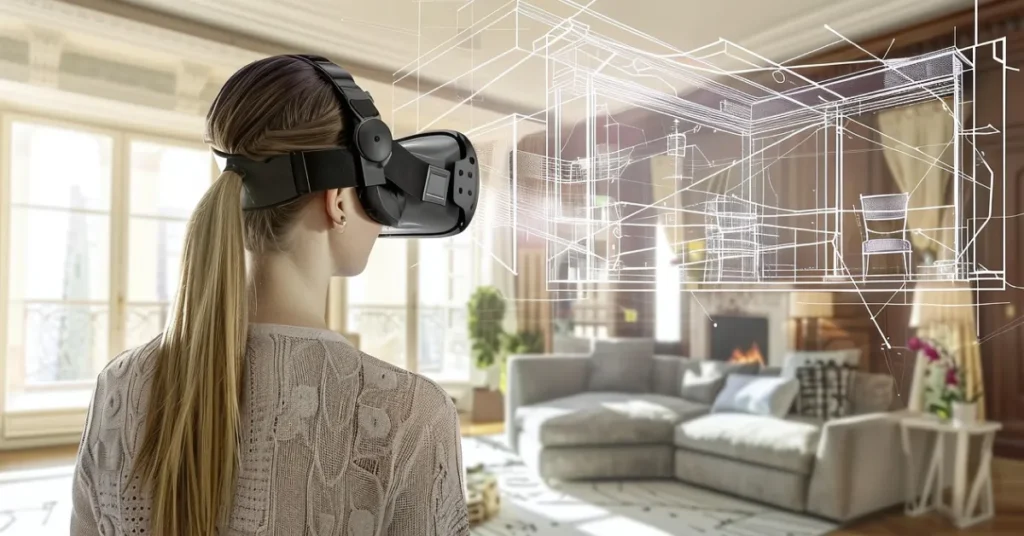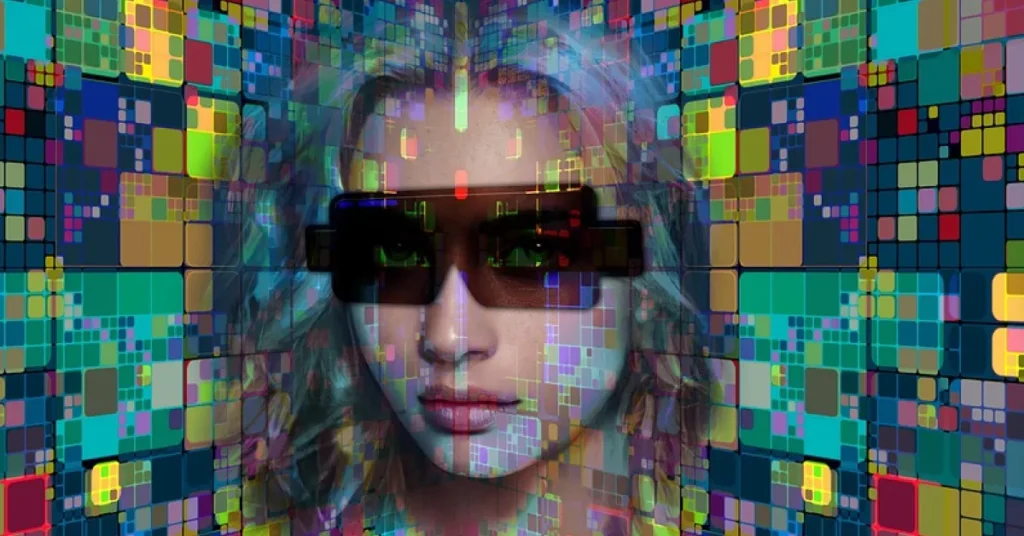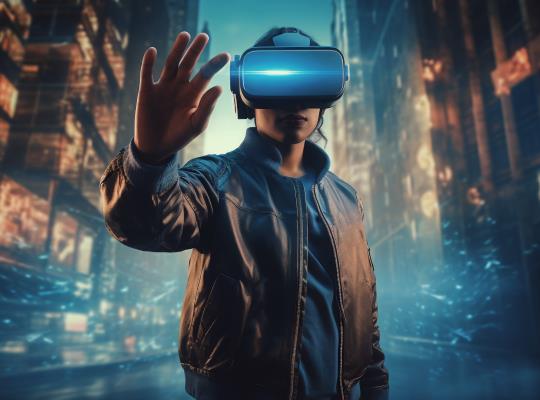When people ask what is augmented reality, they are often searching for clarity beyond the hype. The term has been widely used in technology conversations, marketing campaigns, and industry case studies, but its meaning is often misunderstood. To fully grasp the augmented reality meaning, we need to go deeper into its definition, technical structure, and how it differs from other immersive technologies.
This complete guide provides a professional, detailed explanation of what is AR and offering a structured way to understand how augmented reality means much more than a buzzword.
Table of Contents
What is Augmented Reality?
At its simplest, augmented reality means the blending of digital elements with the real physical world. Unlike virtual reality, which immerses users into a completely digital space, augmented reality overlays computer-generated visuals, text, sounds, or other sensory inputs directly onto the real environment.
So, what do you mean by augmented reality? It’s a technology that does not replace reality but enhances it. Through smartphones, headsets, or glasses, digital objects coexist with physical objects, creating a hybrid view where real and virtual elements interact seamlessly.
The augmented reality meaning lies in this coexistence — a layered experience where reality is not replaced but expanded.

Breaking Down the Augmented Reality Meaning
When defining what is augmented reality, several key components form its meaning:
Real Environment as the Base
- Unlike VR, which discards the physical world, AR starts with reality as the foundation.
- Cameras, sensors, and mapping technologies capture the real environment
Digital Overlay
- Virtual graphics, models, or data are projected on top of the real-world view.
- This overlay responds to perspective, motion, and context.
Real-Time Interaction
- The system ensures that virtual elements stay fixed in the real-world space as the user moves.
- AR is defined by interactivity rather than static visualization.
Thus, what AR is best explained as an enhancement process: reality + digital augmentation = augmented reality.
Technical Structure Behind Augmented Reality
When clients ask what augmented reality is, the answer is incomplete without a breakdown of how it works technically. Understanding the augmented reality meaning requires awareness of its architecture.
Input Devices
- Smartphones, AR glasses, and headsets serve as the medium for delivering AR solutions.
- Cameras and sensors detect surfaces, objects, and environments
Software & Algorithms
- Computer vision identifies physical spaces and anchors digital elements.
- AR software frameworks interpret and display relevant overlays.
Output Layer
- The user sees the combination: the real world enriched with graphics or data.
- This is the exact process that defines what is AR
For a professional AR company like Quantile Corp, precision in combining these components ensures that the augmented reality meaning translates into reliable AR solutions for real industries.

Historical Context of Augmented Reality
Understanding what AR is is also about knowing where it came from.
- The concept dates back to the 1960s when early experiments in overlaying digital graphics on camera feeds began.
- By the 1990s, AR entered industrial and military research, defining early stages of AR solutions.
- In the 2010s, smartphones made augmented reality mainstream, allowing businesses and consumers alike to explore its possibilities.
Today, AR companies like Quantile Corp have moved the meaning of AR beyond novelty, positioning it as a professional tool across industries.
Augmented Reality Meaning in Professional Use
When we define what is augmented reality, it is not just a theoretical idea but a practical framework.
Augmented reality means:
- For healthcare, enhancing surgery with visual overlays.
- For education, layering interactive models onto textbooks.
- For manufacturing, guiding workers with AR-enabled assembly instructions.
Though applications vary, the augmented reality meaning stays consistent: real-world context enhanced with digital precision.
Common Misconceptions Around What is AR
When professionals ask what do you mean by augmented reality, it often stems from misconceptions:
AR is not just gaming
- Many assume AR is limited to entertainment, but the augmented reality meaning goes far beyond.
AR is not VR
- Confusing AR with VR dilutes clarity. The phrase augmented reality means specifically enhancement, not immersion.
AR is not futuristic—it’s current
- The augmented reality meaning is not speculative. AR companies like Quantile Corp deploy AR solutions today across healthcare, education, and manufacturing.
The Role of AR Companies in Defining Augmented Reality
To understand what augmented reality is, one must also look at how AR companies translate theory into practice.
- AR companies specialize in building platforms where digital overlays align seamlessly with real-world objects.
- Firms like Quantile Corp develop custom AR solutions that give practical meaning to the term augmented reality.
- This ensures that augmented reality means not just visual enhancement but operational efficiency, scalability, and measurable outcomes.
Future Direction of Augmented Reality Meaning
Looking ahead, what is AR will evolve as technology advances.
- Improvements in AR solutions will expand precision and realism.
- The augmented reality meaning will increasingly overlap with artificial intelligence, making AR adaptive to user context.
- As AR companies like Quantile Corp innovate further, the industry will continue refining what augmented reality means in practical terms.

Conclusion
It is the seamless integration of real and virtual layers, where augmented reality means enriching the world we see, not replacing it. When asked what do you mean by augmented reality, the answer lies in clarity: AR is enhancement, interaction, and co-existence of real and digital.
In this complete guide, we’ve unpacked the augmented reality meaning, clarified what is AR, and shown how AR companies like Quantile Corp bring the term to life through professional AR solutions.
Ultimately, the different explanations of what is augmented reality all point to one truth: it is not a buzzword but a transformative way of experiencing and interacting with the world.



